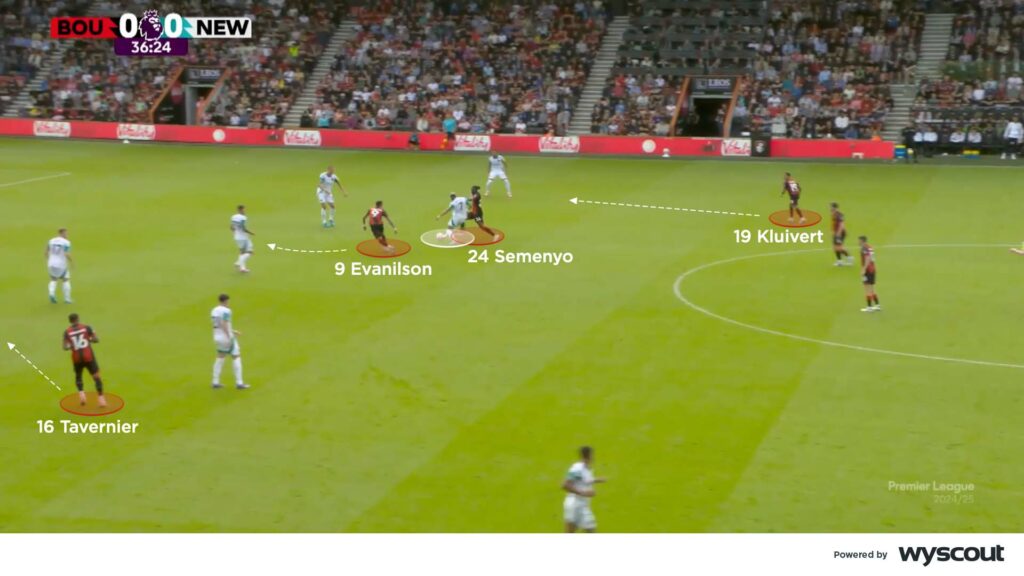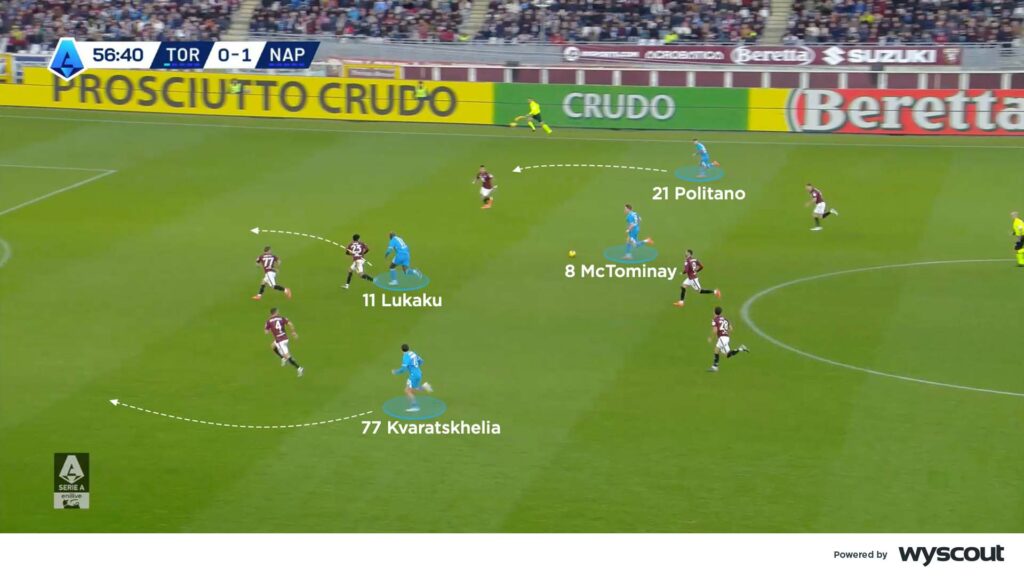
What is an attacking transition?
An attacking transition are the actions taken by a team immediately following a regain of possession. These actions are often in the form of counter-attacks that can give teams an immediate opportunity to create dangerous attacks and score against opposition who are out of balance and recovering in order to regain their defensive structure.
Attacking transitions have become increasingly difficult with the rise of rest defence and counter-pressing, used by teams when they are attacking and in defensive transitions, respectively, to prevent opponents from counter-attacking.
Why are attacking transitions important?
Attacking transitions are important because they provide opportunities to exploit larger spaces and distances between opposition players and units, in order to attack with a directness and speed that can create dangerous attacks and goalscoring opportunities from minimal passes and actions.
Compared to more structured build up – which can require intricate patterns and combinations to create opportunities – attacking transitions provide a much more direct option to attack the opposition, utilising the speed, dynamism and 1v1 abilities of attacking players. With the increase of structured positional play in recent years, in an attempt to control as many phases as the game as possible, more uncontrollable and variable situations are more difficult for teams to retain control of.
“If you don’t play on the counter-attack, it’s because you are stupid. It is a fantastic part of football, a weapon that, when you find your opponent off balance, gives you a fantastic option to score a goal”
José Mourinho, June 2015
What are the different types of attacking transitions?
Attacking transitions can be categorised as the immediate actions following a regain of possession that often allow teams to immediately launch a counter-attack. However, the position and situation on the pitch and in the surrounding area will often dictate which actions a team is able to pursue. A summary of the main situations that lead teams into attacking transitions can be found below.
High Regains: Attacking transitions following successful pressing actions, often in the final third, that lead directly to dangerous attacks.
Counter-attacks: Attacking transitions largely from deeper midfield and defensive areas to exploit large spaces left by the opposition.
Escaping counter-press and securing possession: Attacking transitions where immediately launching a counter-attack is not possible due to poor rest-attack positions or the opposition’s counter-press. In such cases securing possession to find structured build-up positions is more advantageous.
What are the key principles for effective attacking transitions?
Creating space (height and width): Wingers and/or the central striker(s) making runs in behind or into space outside the defending team’s shape, to provide forward options for the deeper ball player to play into.
Speed: Transitioning from a compact defensive structure to an expansive attacking shape as quickly as possible, ensuring that any passes or runs made in these moments are at speed.
Penetration: Playing forwards at the earliest opportunity into the highest possible line, penetrating through the opposition’s defensive lines.
Support: Deeper players supporting with forward runs once attacking transitions have begun, to maintain momentum and ensure there are available follow-up options after playing forwards.
Which coaches have been notable for their teams’ attacking transitions?
Andoni Iraola
Andoni Iraola and his Bournemouth side are an example of the resurgence of attacking transitions, with the Premier League seeing the most shot-ending and goal-ending fast breaks per game, on record, during the 2024/25 season. His Cherries team have been exceptional in generating attacking transitions from high regains, pressing with an unrelenting intensity that leads to high regains and turnovers from which they can immediately create dangerous opportunities.
After pressing Newcastle (below) and forcing Joelinton to face back towards his own goal, Bournemouth’s Antoine Semenyo took this as a trigger to be aggressive in pressure and regain high up the pitch – the start of a dangerous attacking transition close to goal. Following this, Justin Kluivert and Marcus Tavernier supported with width and created space on the outside. Evanilson made an intelligent run between and in behind Newcastle’s disjointed centre-backs. His action created space for Semenyo to travel into, inside the box, before crossing low across the face of goal for Tavernier to score. The latter timed his arrival at the back-post ahead of Newcastle’s recovering defensive line.

Antonio Conte
Italian coach Antonio Conte is well known for the threat his teams possess in attacking transition, albeit in a more traditional sense, through counter-attacks that follow defending in deeper, low-block structures. An example from his Serie A-winning Napoli side is shown below. It is similar to the Bournemouth example (above), but in Napoli’s case following a slightly deeper regain from a compact mid-block structure.
Scott McTominay travels forward to exploit space created by Torino’s dropping defensive line, who attempted to delay Napoli’s progression. Matteo Politano and Khvicha Kvaratskhelia support outside Torino’s full-backs, creating the width needed to accelerate the attack with speed and momentum. This caused a dilemma for Torino’s full-backs; staying narrow opens the space for Napoli’s wingers to receive wide and exploit their 1v1 abilities, while staying wider unnecessarily opens central spaces. The latter occurred, with Romelu Lukaku briefly checking his run to draw Torino’s central defenders to the opposite side, before quickly changing speed and direction to exploit space on his right hand-side, receiving a well-weighted pass in behind to create a chance.

Simone Inzaghi
Another Italian coach, Simone Inzhagi is a more recent protagonist of attacking transitions. His Inter teams used them to particular effect in European competitions. They had the versatility to break from high regains and more advanced counter-pressing scenarios, as well as deeper and more compact low-block situations, as dictated by the game state.
His Inter often used attacking transitions in a slightly different way, utilising one or more traditional centre-forwards as a focal point to break from deeper areas. In the example below, rather than travelling to exploit space, Inter penetrated forwards quickly into Marcus Thuram on the highest possible line at the time. Thuram then attracted the attention of Bayern’s central defenders and central midfielders, who vacated their secure central positions in an attempt to restrict Thuram and regain possession.

However, due to Thuram’s physicality and ability to protect possession under pressure, it created a vast amount of space for Inter to exploit. Lautaro Martínez intelligently pulled wider to lure Bayern’s defensive-line wider and increase the space available to exploit. This allowed Thuram to quickly connect into the deeper supporting Nicolò Barella, to find Henrikh Mkhitaryan in behind Bayern’s high defensive line. In doing so, Inter created an extremely dangerous attacking transition with a minimal number of passes and actions.
To learn more from professional coaches courtesy of Coaches’ Voice, visit CV Academy


